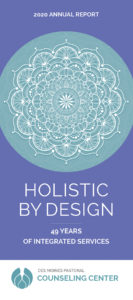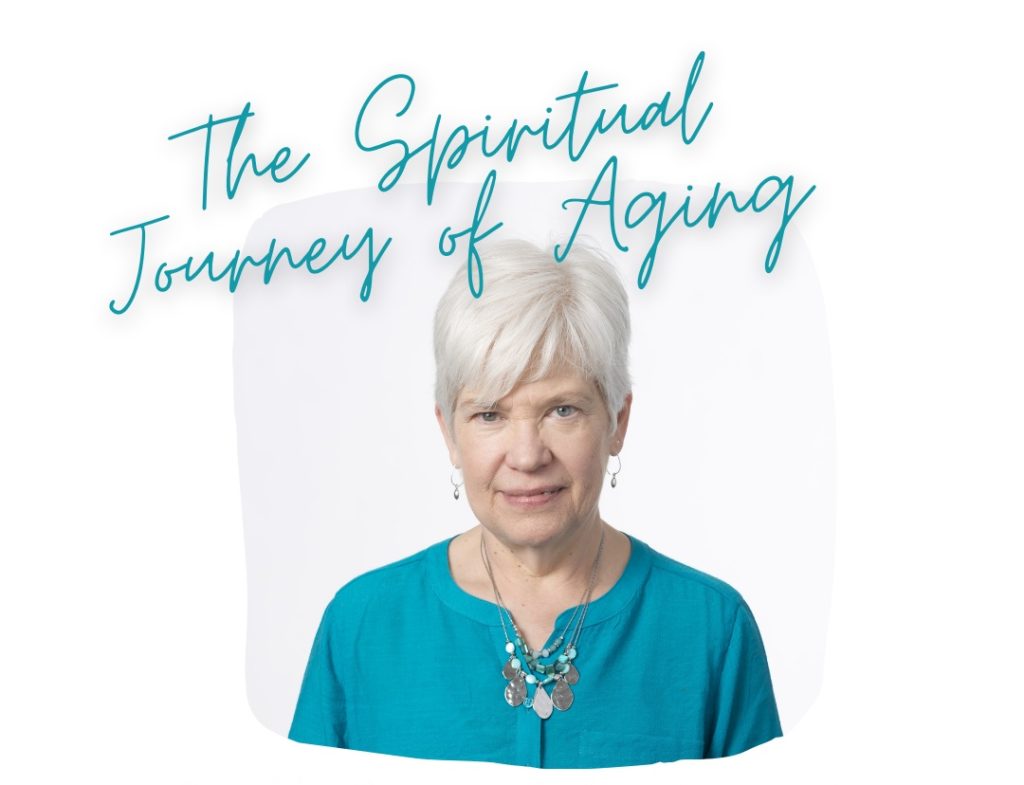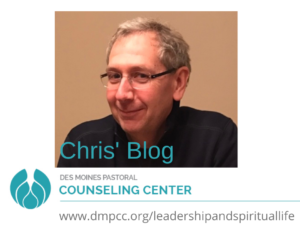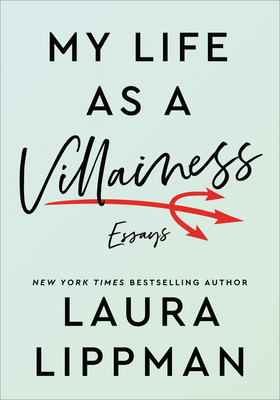2020 Annual Report
We gratefully acknowledge and thank all who so kindly contributed to the Center in 2020. This generosity brings hope and healing to children, teens and adults in need of high quality mental health services.
VISIONARIES ($45,000+)
Polk County Health Services
CHAMPIONS ($25,000 – $44,999)
Delta Dental of Iowa of Foundation
DEFENDERS ($10,000 – $24,999)
American Enterprise Group
Doug Bruce
Carlson Family Foundation
Doug A. Fick
Polk County Board of Supervisors
W.T. & Edna M. Dahl Trust
Sally Wood
PATRONS ($5,000 – $9,999)
Bank of America
BWA Foundation
Community Foundation of Greater Des Moines
Ann Flood
Sally and Tom Graf
William C. Knapp Charitable Foundation/Susan and Bill Knapp
The Viking Foundation of Lincoln
The West Bancorporation Foundation, Inc.
Sally and Sam Wallace
Wells Fargo
HEALERS ($2,500 – $4,999)
Susan and Mark Ackelson
AT&T
Pamela Bass-Bookey and Harry Bookey
Central Presbyterian Church
Cultivating Compassion: The Dr. Richard Deming Foundation
Ernest and Florence Sargent Family Foundation
Starr and Harry Hinrichs
Norma Hirsch
Trudy Holman Hurd
Rusty Hubbell
Hy-Vee
Nancy Main
Sue and Todd Mattison
Plymouth Congregational UCC
Shirley Poertner
Dr. Michael and Ann Richards
Rotary Club AM
Rachel Stauffer and Jim Lawson
Kitty Ellsworth Stoner
Susan and Carl Voss
Marti Wade
West Bank
Kathleen and Larry Zimpleman
NURTURERS ($1,000 – $2,499)
Anonymous
Linda and Bob Anderson
Sandra L. and Rev. Paul R. Axness
Dr. Barbara Beatty
Kristen Benge
Karin Beschen
Annie and Matt Brandt
Elizabeth Burmeister
Teree Caldwell-Johnson
James Carney
Chrysalis Foundation
Roxanne Barton Conlin
Patty Cownie
Des Moines University
Paula Duncan
Easter Family Fund
Nora and David Everett
Kathy Fehrman
Cindy and Tom Fischer
Jann Freed and John Fisher
Foster Group, Inc.
Fredrikson & Byron, P.A.
Barbara M. Gartner
Beth and Stephen Gaul
Diane Glass and J. Jeffrey Means
Sharon Goldford
Mary Gottschalk and Kent Zimmerman
Katherine S. Hauser, M.D.
John and Jeannine Hayes
Sarah and Jim Hayes
Leslie and Steve Heimbach
Lynn Hicks
Ann and Thomas Holme
Charlotte and Fred Hubbell
Debbie and Michael Hubbell
Ellen Hubbell
Randy H. Hamilton and Bruce L. Hughes
Iowa Foundation for Education, Environment, and the Arts
Andrea James
Jewish Federation of Greater Des Moines
Robert Josten and Susan Judkins
Junior League of Des Moines, Inc.
Nancy and Bill Knapp II
Silver Fox
Kristen and Joe Lee
Frank Levy
Tracy Lewis and Rick Gubbels
Janet Linn
Robbie and Rick Malm
Steve Marquardt
Jami Matice
LaDonna and Rich Matthes
Claudette M. McDonald
MidAmerican Energy Company
James Miller
Karla and Mark Minear
Dr. Bernard and Brenda Mouw
D.J. Newlin
Pauline and William Niebur
Oasis, A Paychex Company
Cynthia O’Brien
Jill Oman
Allison and Timothy Peet
Deb and Bob Pulver Foundation
Iowa Radiology
Lynn Rankin and Steve Karlin
Janis Ruan
David Safris
Salon Spa W
Jackie Saunders
David and Mari-Jo Shaw
Rebecca Shaw
Chris and Larry Sidwell
Cameron Shepherd and Peter Sloterdyk
Kathy and Ted Stuart
Mary H. Stuart and David Yepsen
Nanette D. Stubbs
Marsha Ternus
Toni Urban
Sheri and Dick Vohs
Dr. Teri Wahlig and Mark Feldmann
Cynthia and Kent Wanamaker
Karrie and Mark Weinhardt
Connie Wimer
Alan Zuckert and Joyce Dainty
ADVOCATES ($500 – $999)
Anonymous
Stephanie Asklof
Mollie Baker
Susan Ballard
Libby and Charles Becker
Janet Betts
Carol Bodensteiner
Renee Clippert
Beth Coonan
Suzanna de Baca
Marsha and Ellery Duke
Sondra Eddings
Denise Essman
Georgann Franck
Deborah Gitchell
Bonnie Green
Jill D. Greiner
Mary Pat Gunderson
Barbara Hein
Jody and Thomas Herman
Tim Hickman and Frank Vaia
Kathleen Hoegh
Martha James
Ms. Linda Jennings
Karen Jeske
Dianne and Roger Jones
Anne Kelly
Kemin Industries, Inc.
Lola and David Kenworthy
Diane and Keith Krell
Marla Lacey
Jennie LeGates and Fritz Wehrenberg
LMC Insurance & Risk Management
Shirl Melton
Robyn Mills
Cheryl Morton
Barbara and Dan Mueller
Barb and Andy Nish
Beth Nyguard
Jo Oldson and Brice Oakley
Jennifer Lock Oman
Lynsey Oster
Rita Perea
Olivia Rasmussen
Kay Riley
Estee Roe
Kelle Rolfes
Anne Roth
Patrice Sayre
Chris Shay
Marti Sivi
Laurie and Ashley Sloterdyk
Terri Mork Speirs and Robert Speirs
Randal and John Stern
Bob and Karen Unrau
Char Vukovich
Emily and Fred Weitz
Deb Wiley and John Schmidt
Jean and Bob Williams
Emily Williams-Bouska
Kim and Rich Willis
Connie Wilson Design
SUPPORTERS ($250 – $499)
Anonymous (4)
Becky Anthony
Assured Life Association
Patricia Barry and Bryan Hall, In Honor of Mary Riche
Mary K. Bartine
Mary Beard
Connie Beasley
Christine Bening
Sandy Benson Johnson, Benson Family Foundation
Beth Bishop
Paula Bittick
Connie Boesen
Nancy Bone
Michelle Book and Woody Brenton
Margaret Borgen
Katie Bradshaw
Dory Briles
Shelley Brody
Mary Brooks
Suzie Glazer Burt
Phyllis and Richard Cacciatore
Bonnie Campbell
Tom Carpenter
Kevin and Julie Carroll
Marilyn Carroll
LaNae Ceryanec
Joyce Chapman
Diane and Tom Child
John and Holly Clark
Polly Clark
Alicia Claypool
Julie Ann Connolly
Chris Conyers
Stephanie Cornish
Kim Coulter
Holly Craiger
Cheryl Critelli
Cynde Cronin
Diane Cutler
Douglas Detrick
Dr. Christine Dietz
Denny Donnelly
Richard Douglass
Kelly Edmister
Lynn Ekblad
Dr. Kathy Elsner, D.D.S.
Karen Engman
Claudia Peyton Ewald
First United Methodist Church
Peggy Fisher
Judith Flapan
Fran Fleck
Allison Fleming
Julie Fleming
Robin Fortney
Heidi Foster
Richard Gibson
Judy Gilbert
Kathy Giles
Shawna Gisi
Linda Goeldner
Judy Goodwin
Mary Gordon
Carrie and Joe Hall
Carol Corning Hallquist
Rachel Hardin
Renee Hardman
Dennis Groenenboom and Scott Hartsook
Lori and Larry Hartsook
Lynn Heggen
Victoria Herring
Trudie Higgs
Kelli Hill
Rev. Martha Hill
Jennifer Hilmes
Barb Hirsch-Giller
Jill Hittner
Dixie Hoekman
Michelle Hogan
Julie Honsey
Beverly Hutney
Connie Isaacson
Connie Cook and Joe Jongewaard
Rosemary Jungmann
Maureen Keehnle
Suzan Kelsey Brooks
Pamela Kenyon
Char Kimball
Mary Ellen Kimball
Kitchen Collage
Kathi Koenig
Mary Kramer
Mary F. Kunkel
Caroline Levine
Tracy Levine
Christine Lewis
Theresa and Doug Lewis
Sheila Starkovich Lingwall
Julie Linn
Lisa Veach
Ann Lyons
Deb Madison-Levi
Cyril Mandelbaum
Kate Massop
Lorraine May
Cathy McMullen
Jan and John Mechem
Kristin Medhurst
Rebecca and Brian Metzger
Ann Michelson
The Middleton Family
Allen Miller
Lisa Minear
Jana Montgomery
Ann and Alfred Moore
Debra Moore
Polly Moore
Diane H. Morain
Jill Musin
Linda K. Neuman
Liz Neumann
Dawn Connet and Greg Nichols
Charlotte Noble
Jackie Norris
Jeanne O’Halloran
Noreen O’Shea and Thomas Benzoni
Katie Gibson Overby
Mary Pappajohn
Donna Paulsen
Gail Pearl
Phyllis Pearson
Sally Pederson
Sen. Janet Petersen and Brian Pattinson
Diann M. Peyton
Melissa Poley, Serendipity Spa
Deanna Questad, M.D.
Judy Ralston-Hansen
Lynette Rasmussen
Artis Reis
Mary Anne Rennebohm
Martha A. Reno
Helen Robinson
Steven Rosenberg
Janet Rosenbury
Katie Roth
Priscilla Ruhe
Katherine Safris
Priscilla Sayeed
Pam Schoffner
Eliza Ovrom and Mark Schuling
Melanie Scupham
Karen Shaff
Mary Kay Shanley
Loretta Sieman
Kendra Simmons
Rachel Sivi
Sue and Larry Sonner
Kelly Sparks
Kimberly Stamatelos
Joan Stark
Hallie Still-Caris
Jacqueline Stoken
Ellen Strachota
Gail Stubbs
Sarah Sullivan
Sarah Susanin
Cheryl Sypal
April Talbot
Joyce and Harold Templeman
Terri Vaughan
Susan Vujnovich-McRoberts
Marcia Wanamaker
Marilyn Warling
Linda Weidmaier
Tracy Wheeler
Michele Whitty
Malinda Wiesner
Willis Auto Campus
Martha Willits
Rena S. Wilson
Mary L. Wine
Janie Wine
Dr. Judy Winkelpleck
Roberta and Reg Yoder
FRIENDS ($100 – $249)
Anonymous (4)
Nancy and Jim Adrianse
Robin Ahnen-Cacciatore and John Cacciatore
Rebecca Albers
Jennie Allbee
Amy Anderson and Mark Hill
Ed Augustine
James Austin
Barb Bachman
Rabbi Emily Barton
Morgan Baumert
Benson Family Foundation
Kathy Bernreuter
La Verne and Blaine Briggs Donor Advised Fund at the Rancho Santa Fe Foundation
Rachel Bruns
John Bunz
Ellen and John Burnquist
Judith Burns
Tom Butterfield
Shelley and Joseph Chambers
Mary Sconiers Chapman
Eva Christiansen
Mary Cory
Patricia and Jay Cramer
Delta Dental of Iowa
Lori and Tim Diebel
M.J. Dolan
Amy and Tom Donnelly
Margaret Doyle
Mary Beth Drey-Buechel
Kathryn Wheeler Driscoll
Teresa Driscoll
Jane Fogg
Marianne Fons
Ruth Foster
Linda Franker
Paige and Jason Franzluebbers
Carol Fredrich and John Fairweather
Mary Ann Gardner
Mollie Giller
Sandra Githens
Eve and Darrell Goodhue
Celeste Goodrich
Mary Helen Grace
Kay Grother
Ann Harrmann
Mark Haverland
Kathleen Heinzel
Jane Hemminger
Denise Holck
Dale Howe
Dr. Alexandra Hubbell
Ted Irvine
Kathe and Bob Irvine
Joseph Jester
Joanne Johnson
David Johnson
Beth Stelle Jones
Megan Kading
Emily Susanin Kessinger
Brad and Lori Kiewel
David King
Jenna Knox
Susan Koehler
Angela Loomis
Marian and Ivan Lyddon
Glenys Bittick Lynch
Sharon and Susan Malheiro
Meghan Malloy
Ali Makris
Anna Mason
Linda and Nile McDonald
Kate Mead
Patricia Mikus
Joan Miller
Amy Mills
Rev. Rachel Thorson Mithelman
Cindy Mumm
Anna and Bobby Nalean
Jessica Nelsen
Charlotte Nelson
Ellen and Bruce Nelson
Nancy Nichols
Nancy Nunn
Mary O’Brien
Catherine Olesen
Linda and Gary Ordway
Leigh O’Tool
Diana and Daryl Pals
Katie Patterson
Muriel Pemble
Judy and John Perkins
Kim Poeppe
Donni Popejoy
Kathy Reardon
Cindy Chicoine and Morgan Rivers
Sunny Roeder
Victoria Roller
Harlan Rosenberg
Annette and Randy Roth
Don Rowland
Barbara Royal and Deidre Fudge
Linda Rullan
Marsha Rusch
Marilyn and Duane Sand
Laura Sands
Kathryn and Mike Sankey
Erica Schaefer
Sam Scheidler
Ann Olsen Schodde
Barbara Scholz
Erica Shannon Stueve
Cherry and David Shogren
Gina Skinner-Thebo
Chuck and Meg Smith
David and Betty Stout
Jan Stump
Martha Swanson
Sue Ann Tempero
Margaret Van Houten
Sierra Waddell
Chris Waddle
Ann-Charlotte Wade
Martha Ward
Whitney Warne and Erik Dominguez
Emily Webb
West Des Moines Christian Church
Christopher Wilson
Andrea Woodard
Barbara and Jon Yankey
Suzanne Zilber
COMPANIONS (gifts up to $99)
Anonymous
John and Laura (Ackelson) Christiansen
Jeff Anderson
Susie and Charlie Anderson
Mary Ann Moore
Beverly Apel
Ashley Asberry
Janice Bannister
Mary Barber
Dodie and Wayne Bauman
Teresa Baustain
Lois Beh
Julie Benson
Judy Blank
Jan Blessum
Patricia Boddy
Nan Bonfils
Lindsey Braun
Rose Breuss
Lisa Brovold
John Robert Burkhart
Beverly Butler
Sue Caley
Vero Chiropractic
Zach and Azure Christensen
Kathleen Clark
Annie Clarkson
Tracy Codel
Julie Coppock
Mark Courter
Rebecca Criswell
Judy Curtis-Latessa
Gina David
Judy Davis
Linda Dawe
Dave and Kristi Dawson
Kathleen Delay
Sheryl DeMouth
Lillian Dittrick
Erik Dominguez
Karen Downing
Jennifer Drake
Keeley Driscoll
Olivia Driscoll
Pamela Duffy
Beth Ann and John Edwards
Jim Egger
Joan Ellis
Beverly Evans
Mary Fanter
Rhonda Fingerman
Brenna Finnerty
Jane Flanagan
Annie Flood
Margaret Flood
Sheri Fogarty
Chris Frantsvog
Eileen Gebbie
Catherine Gillespie
Harlan Gillespie
Julie Good
Grace Green-Dickerson
Courtney Greene
Nancy T. Guthrie
Terri Hale
Sally Hampton
Jan Hardin
Tara Harms
Melissa Harris
Penny Heiss
Highland Park Christian Church
Daniel Hoffman-Zinnel
Larry Hoier
Cheryl Hood
Teri Hughes-Paulline
Janet A. Johnson
Laurie Jones
Diana Kautzky
Mary Keables
Deb Kline
Wendy Knowles
Kay Kopatich
Nancy Landess
Mary Daily Lange
Carol Leech
Ann Levine
Gary Lewis
Linda Railsback
Linda Liston
Jess Lundquist
Lindsey Mabe
Lynn Mankins
Joan Mannheimer
Diane McClanahan
Nancy McClimen
Lynn Z. and David G. McCreery
Ms. Louise McDonald
Carol McGarvey
Alissa McKinney
Michael McNeil
Bob and Sharon Meisenheimer
Matt Meline
M. Ann Mendleson
Reo Menning
Kendra Miller
Jami Milne
Karen Muelhaupt
Phyllis Mumford and Kent Sovern
Marilyn Musser
Stacie Neussendorfer
New Beginnings Christian Church
Fred O’Dell
Carla Offenburger
Vickie Olsen
Mary St. Onge
Laura Palmer
Mary Jean Paschen
Debra Peckumn
Cheryl Pederson
Sandy Percy
Sherri Pike
Kathy Quinn
Linda Railsback, M.D.
Wilma Richards
Lane Riggle
Tamara Rood
Sheila Rouse
Myrna and Kenneth Rummer
David and Lita Sagula
Debra Salowitz
Betsy Salsberry
Karin Sandahl
Abigail Schiltz
Jill Schreiber
Lois Schultz
Cory Scott
Bobbi Segura
Susan Seitz
Andrea Severson
Mary Sheldahl
Beverly Shirbroun
Kathy Shives
William Staplin
State of Iowa One Gift Program
Jan Stegeman
Joshua Steward
Mary Ellen Streyffeler
Sybil Sullivan
Robin Kline
Aundrea Suntken
Deborah Svec-Carstens
Veronica Swift
Sister Cathy Talarico, CHM
Peri Van Tassel
Ellen Taylor
John R. Taylor
Judy Taylor
Debra Tesson
Lisa Todd
Cecilia Tomlonovic
Jill and Derek Trobaugh
Elaine Van Dyck
Suzanne Van Englehoven-Wedeking
Mary Van Heukelom
Carole Venhaus
Christine Walker
Kjersten Walker
Jodie Warth
Jody White
Dee Willemsen
Sarah Noll Wilson
Ronda Wissink
The Reverend Paul Witmer and Lynn Heuss
Chris Woods
Katherine Sircy
Mary Yearns
Gifts in Kind
Anonymous
Tom Fischer
Shirley Poertner
Business Publications Corp.
Integrity Printing
Connie Wilson Design
| Honor Gifts | |
| Gifts were given in honor of: | Given by: |
| All the hard working staff in Iowa’s community health centers | Nancy Adrianse |
| Susan Ackelson | Mary and Lorlin Barber |
| Laura and John Christiansen | |
| Cris and Dick Douglass | |
| Ellery and Marsha Duke | |
| Ann Flood | |
| Diane Glass and J. Jeffrey Means | |
| Kathe and Bob Irvine | |
| Marilyn and Duane Sand | |
| Susan Seitz and Mike Smith | |
| Marti Wade and Benjamin Ullem | |
| Suzanne Zilber | |
| Beverly Apel | Paul Bittick |
| Jan Berg Kruse | Tracy Wheeler |
| Laurie Betts Sloterdyk | Annie Sloterdyk Brandt |
| Peter Sloterdyk | |
| Susan and Carl Voss | |
| Mary Kay Bruce | Michelle Book and Woody Brenton |
| Mary Brooks | |
| Azure Christensen | |
| Eileen Burtle | Phyllis and Richard Cacciatore |
| CASH Potluck Group | Diane and Tom Child |
| Shelley Chambers | Shelley and Joseph Chambers |
| Renee Clippert | Joan Ellis |
| Eva Christiansen | State of Iowa One Gift Program |
| Dennis T. Cuthbertson | Susan Ballard |
| Des Moines Pastoral Counseling Center Staff | Beth Bishop |
| Linda Goeldner | |
| Christine Dietz | Brenna Finnerty |
| Melissa Harris | |
| Debra Peckumn | |
| Barbara Royal and Deidre Fudge | |
| Ellery Duke | Beth and Stephen Gaul |
| Ann Flood | Annie Flood |
| Mary Gottschalk | Carol Fredrich and John Fairweather |
| Teree Caldwell-Johnson and Vernon Johnson | |
| Lynn and David McCreery | |
| Jerry Gubbels and Robert Lewis | Tracy Lewis and Rick Gubbels |
| Harold “Hal” Higgs | Kathryn and Mike Sankey |
| In gratitude of Christmas Traditions | Richard and Robbie Malm |
| Diane McClanahan | Susan Ballard |
| Teresa Baustian | |
| John and Christine Burkhart | |
| Beverly Butler | |
| Cindy Chicoine | |
| Christine Dietz | |
| Eileen Gebbie | |
| Harlan Gillespie | |
| Diane Glass and J. Jeffrey Means | |
| Sharon and Dennis Goldford | |
| Julie Good | |
| Mary Gottschalk and Kent Zimmerman | |
| Leslie Heimbach | |
| Julie Honsey | |
| Kendra Miller | |
| Karla and Mark Minear | |
| Terri and Robert Speirs | |
| Joshua Steward | |
| Susan and Carl Voss | |
| Marti Wade and Benjamin Ullem | |
| Martha Ward | |
| Paul Witmer and Lynn Heuss | |
| Rachel Meier | Paige Kennedy Franzluebbers |
| Mark Minear | Kathleen Hoegh |
| Greg Nichols | Nancy Nichols |
| Allison Peet, Terri Mork Speirs, Billie Wade | Katherine and Andrew Hauser |
| Ashley Sloterdyk | Peter Sloterdyk |
| Kathy Reardon | Chris Frantsvog |
| Beth and Stephen Gaul | |
| Sharon and Dennis Goldford | |
| Julie Honsey | |
| Catherine Olesen | |
| Beverly Shirbroun | |
| Jan Stegeman | |
| Deborah Svec-Carstens | |
| Marti Wade and Benjamin Ullem | |
| David Wright and Kathi Sircy | |
| Mary M. Riche | Jennie and Robert Allbee |
| Becky Anthony | |
| Patricia Barry and Bryan Hall | |
| Mary Ann Beard | |
| Dory Briles | |
| Mary Kay and Doug Bruce | |
| Mary Chapman | |
| Connie Cook | |
| Kitty Ellsworth Stoner | |
| Heidi and Rod Foster | |
| Mary Susan Gibson | |
| Katie Gibson Overby | |
| Judy Gilbert | |
| Sharon and Dennis Goldford | |
| Mary Pat and Joe Gunderson | |
| Carol Corning Hallquist | |
| Ann Harrmann | |
| Victoria Herring | |
| Jane Hemminger | |
| Connie Isaacson | |
| Karen Jeske | |
| Susan Judkins and Robert Josten | |
| Maureen Keehnle | |
| Pamela Kenyon | |
| Jenna Knox | |
| Tracy Levine | |
| Ann Lyons | |
| Richard and Robbie Malm | |
| Linda Neuman | |
| Allison and Timothy Peet | |
| Audrey Rosenberg | |
| Priscilla Sayeed | |
| Sue Ann and Richard Tempero | |
| Anna Van Heukelom | Mary Van Heukelom |
| Susan and Carl Voss | James Carney |
| Shannon Welch-Groves | Allison and Timothy Peet |
| Memorial Gifts | |
| Gifts were given in memory of: | Given by: |
| Isabel Anne Dietz | Myrna and Kenneth Rummer |
| Jan Berg Kruse | Tracy Wheeler |
| Walt Githens | Sandra Githens |
| Winnie Grace Hayes | John and Jeannine Hayes |
| Troy Matice | Delta Dental of Iowa |
| Jami Matice | |
| Victoria Roller | |
| Tim Means | M. Ann Mendleson |
| Don Pinkley | Karen and Larry Holer |
| Ray Speas | Anonymous |
| Margaret Swanson | Mara Swanson |
| Kris White | Linda “Sunny” Liston |







 File this in “What I’m reading now.”
File this in “What I’m reading now.”
